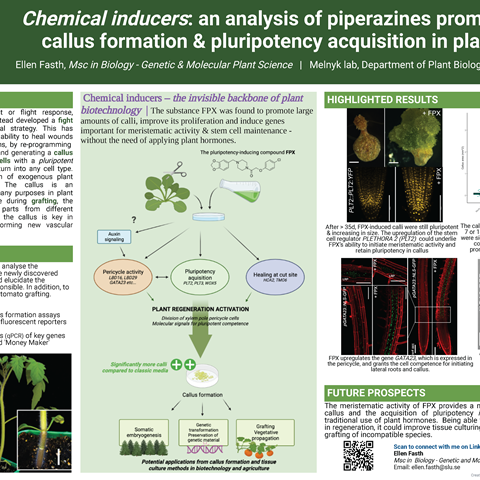Chemical inducers - an analysis of piperazines promoting callus formation & pluripotency acquisition

Ellen Fasth, Msc Biology - Genetic & Molecular Plant Science
Summary
Analogous to animals' fight or flight response, sessile land plants have developed a fight or fix module as a survival strategy. This has resulted their remarkable ability to heal wounds and replace damaged organs by re-programming cells, which is exploited in tissue cultures. This thesis addresses the use of a chemical inducer called fipexide (FPX), that was found to promote the formation of callus - a mass of stem cells that later can differentiate into any cell type - improve its proliferation and induce genes important for stem cell maintenance. The inducer was also evaluated for improving tomato grafting using 'Celebrity' and 'Money Maker' cultivars, in which it increased the attachment rate when added to the media. In addition to this, it positively affected genes such as HIGH CAMBIAL ACTIVITY 2 that activate wound healing. Collectively, chemical inducers like FPX can promote callus formation and provide a novel tool in activating pluripotency in plant cells.
